3-Ingredient Easy Egg-Free Crêpes Recipe

Egg-Free Crêpes are a variation of the classic crepes, designed for those who cannot eat eggs – due to intolerances, allergies or dietary choices – or simply do not have them available at home. Their dough requires only 3 ingredients: milk, flour and oil. The resulting mixture, after a short rest, is cooked in the crepe maker one ladle at a time, just like traditional crêpes. These are elastic and thin pancakes, ideal for being stuffed with both sweet and savory fillings.
The absence of eggs determines a mixture that needs a few more minutes of cooking at the base, before being easily turned. Despite an apparent crispiness, once cooked, stacked on top of each other and then covered with a cloth, the crêpes become flexible and yielding, exactly like the original ones. The presence of oil, in place of butter, also makes them lighter.
What Are Egg-Free Crepes?
Crêpes originated in Brittany, France, dating back to the 13th century, when buckwheat—introduced from Asia—became a staple ingredient. These thin, delicate pancakes quickly gained popularity across France and beyond, evolving into both savory (galettes) and sweet versions. Traditionally made with eggs, flour, and milk, crêpes became a symbol of French culinary elegance.
The egg-free variant likely emerged as a practical adaptation for those with dietary restrictions or during times of ingredient scarcity. By adjusting the recipe with alternatives like cornstarch, plant-based milk, or mashed bananas, eggless crêpes maintain their light, flexible texture, making them a versatile option for modern diets, including vegan and allergy-friendly lifestyles. Today, they continue to be enjoyed worldwide with endless sweet and savory fillings.
Pro Tips for The Best Egg-Free Crepes
- All-purpose or 00 flour ensures a smooth, elastic batter. For a healthier option, try whole wheat or oat flour.
- Resting the batter for 15–30 minutes helps hydrate the flour and improves texture.
- The batter should be thin and pourable; add more liquid if it’s too thick.
- A well-greased non-stick pan prevents sticking and ensures even cooking.
- Too high, and they burn; too low, and they turn rubbery. Medium heat gives the best golden color.
- Use a bit of oil or butter between crêpes to prevent dryness.
- Wait until the edges lift slightly (about 1–2 minutes) before flipping.
- Stack crêpes on a plate and cover with a clean towel to keep them soft.
Are These Crepes Also Vegan?
No, they're not, because in our recipe we used cow's milk, but, in case you have vegan or lactose intolerant guests, you can replace it with a plant-based drink without added sugars, such as soy or almond.
How Do I Know When These Crepes Are Cooked?
You'll know egg-free crêpes are cooked when the edges start to lift and look slightly crisp (about 1–2 minutes). The surface should be dry with light golden spots. Flip gently and cook for 30–60 seconds on the other side. Avoid overcooking to keep them soft and flexible!
What Can I Do With These Egg-Free Crepes?
Egg-free crêpes are versatile and can be enjoyed with sweet or savory fillings:
- Sweet Fillings: Jam, chocolate spread, peanut butter, fresh fruits, maple syrup, honey, coconut cream, or plant-based whipped cream.
- Savory Fillings: Sautéed mushrooms, spinach, dairy-free cheese, hummus, avocado, roasted veggies, or mashed potatoes.
They can be rolled, folded, or stacked to make desserts, wraps, or even crêpe cakes!
Why Are My Crepes so Chewy?
If your egg-free crêpes turned out chewy, it may be due to overmixing the batter, which develops too much gluten—mix just until combined. Another common issue is too much flour or too little liquid, making the crêpes dense instead of light and flexible. The batter should be thin and pourable for the best texture. Additionally, cooking on low heat can cause toughness rather than the desired soft, delicate consistency, so it's best to use medium heat.
Can I Make Egg-Free Crepes Ahead of Time?
Yes! Egg-free crêpes can be made ahead of time. Store them in the fridge for up to 2 days, stacked with parchment paper in between to prevent sticking. Reheat in a pan or microwave before serving.
Do Egg-Free Crepes Freeze Well?
Yes! Egg-free crêpes can be frozen for up to 2 months. Stack them with parchment paper in between, place them in an airtight container or freezer bag, and freeze. To use, thaw in the fridge or at room temperature, then reheat in a pan or microwave.
How to Store Egg-Free Crepes
Store leftover egg-free crêpes in the fridge for up to 2 days, stacked with parchment paper between them to prevent sticking. Keep them in an airtight container and reheat in a pan or microwave before serving.
Ingredients
How to Make Egg-Free Crepes
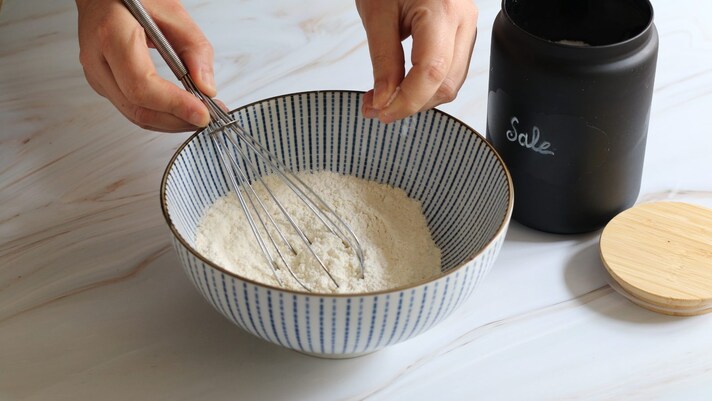
Collect the dry ingredients in a bowl (the flour and salt).
Collect the dry ingredients in a bowl (the flour and salt).
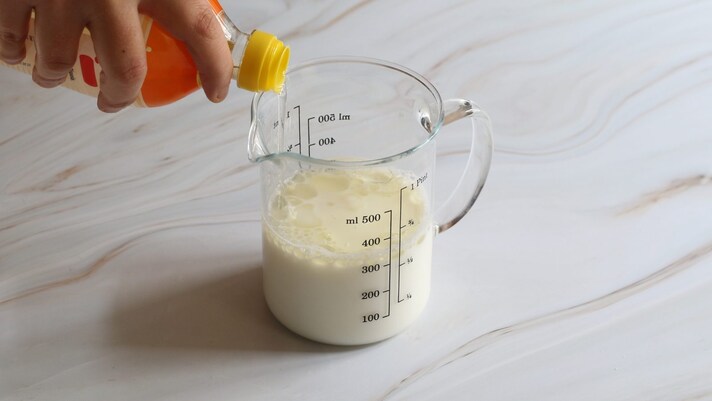
Measure and collect the wet ingredients in a jug (milk and oil). Mix them well.
Measure and collect the wet ingredients in a jug (milk and oil). Mix them well.
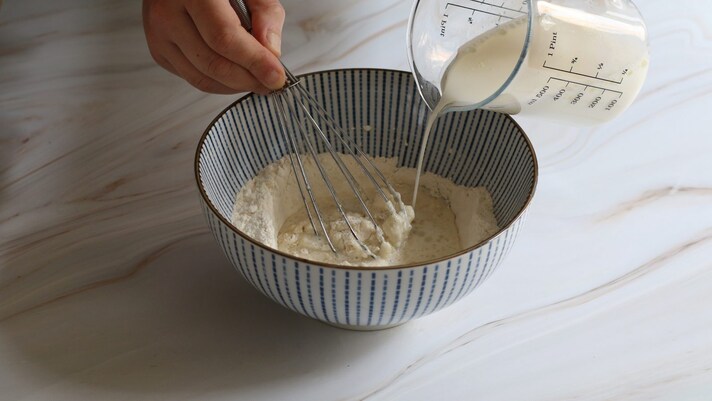
Pour the liquid mixture into the dry ingredients, working with a hand whisk.
Pour the liquid mixture into the dry ingredients, working with a hand whisk.
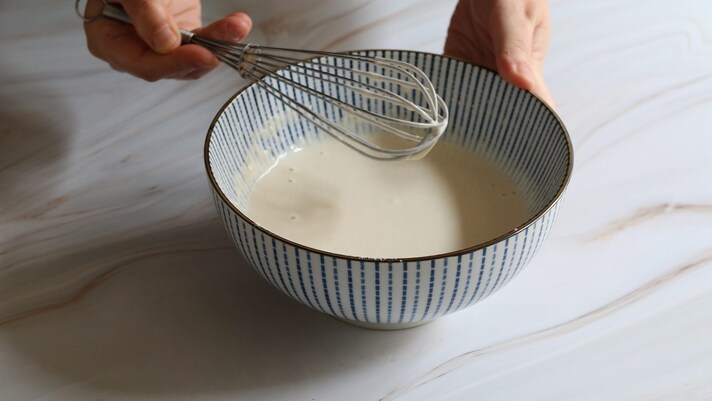
When the mixture appears homogeneous and smooth, cover it with cling film and let it rest in the fridge for an hour.
When the mixture appears homogeneous and smooth, cover it with cling film and let it rest in the fridge for an hour.
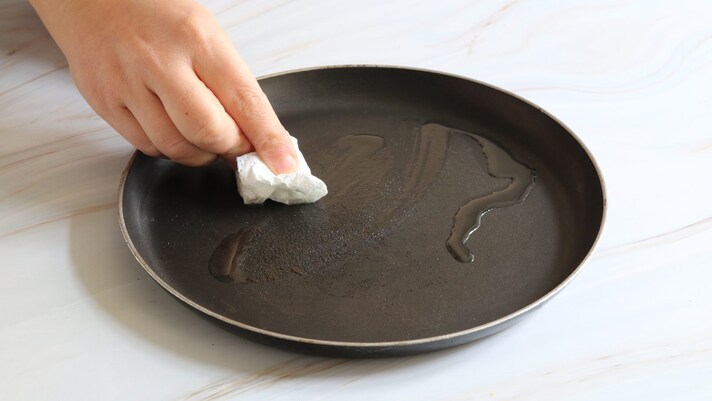
Drop a few drops of seed oil on the bottom of a non-stick crepe pan and sprinkle it with kitchen paper.
Drop a few drops of seed oil on the bottom of a non-stick crepe pan and sprinkle it with kitchen paper.
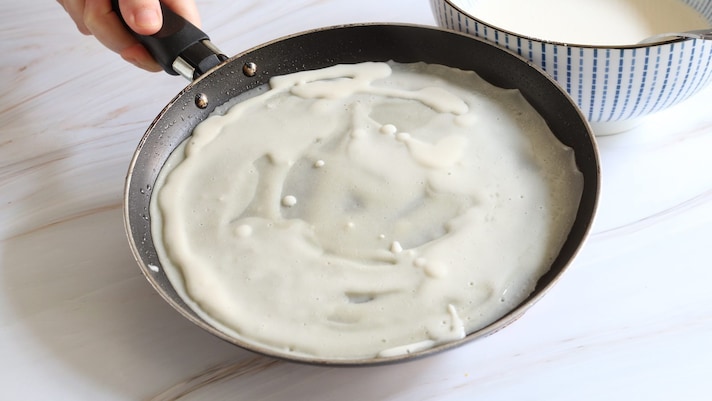
Heat the crepe pan well, pour a ladle of mixture into the center and rotate the pan well, so as to perfectly cover the bottom.
Heat the crepe pan well, pour a ladle of mixture into the center and rotate the pan well, so as to perfectly cover the bottom.
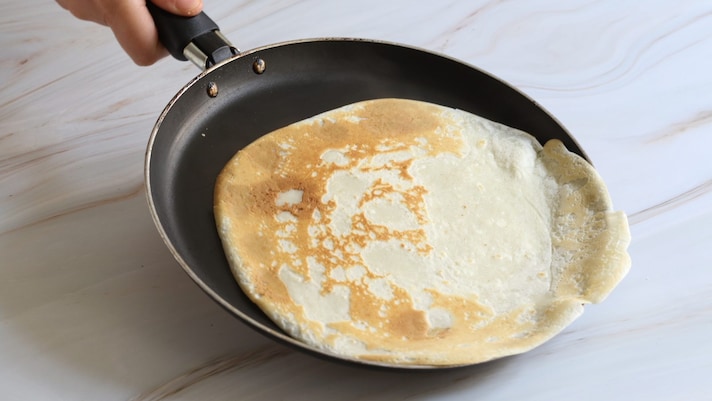
Cook on low heat for a couple of minutes, monitoring the level of browning. As soon as the base is stable and golden, turn the crepe over with the help of a spatula and let it brown on the other side as well.
Cook on low heat for a couple of minutes, monitoring the level of browning. As soon as the base is stable and golden, turn the crepe over with the help of a spatula and let it brown on the other side as well.
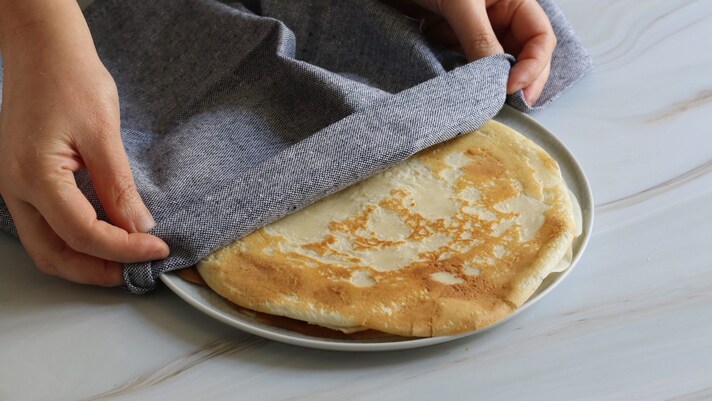
Stack the crepes on top of each other as they are ready, keeping them covered and warm with a clean tea towel.
Stack the crepes on top of each other as they are ready, keeping them covered and warm with a clean tea towel.

Enjoy them as you please!
Enjoy them as you please!
;Resize,width=767;)



